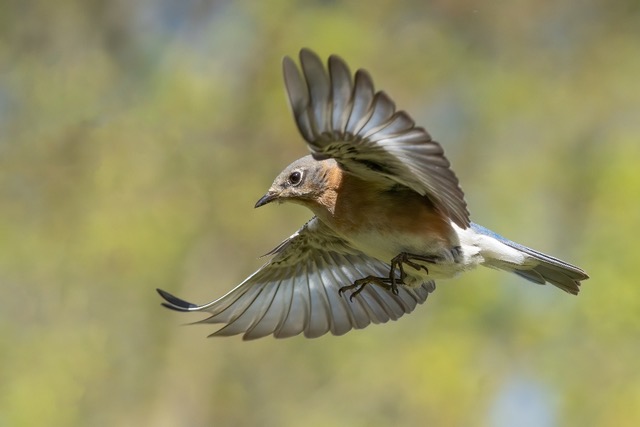Tip of the Week: Avoiding bird strikes on your windows
– by Kari Klassen for Sustainable Orillia
COVID-19 has brought some unexpected experiences, but a sudden rise in concern for the safety of migratory birds was not exactly predictable. In fact, it came as a surprise to Michael Mesure, Executive Director and Co-Founder of FLAP (Fatal Light Awareness Program) Canada. “We, as a charity, anticipated the bottom falling out [of our fundraising efforts] and prepared a budget according to that, and the exact opposite happened. It’s hard to keep on top of it all,” he says, referring to the sudden interest in saving migratory birds.

Widely recognized as the pre-eminent authority on the bird/building collision issue, FLAP’s website notes around 25 million migratory birds die every year as a direct result of collisions with buildings. The difference between the pre-COVID era and now is that people have been working from home and are present to hear or see the collision of birds with their windows. “According to some of these companies that produce bird collision deterrent products, their sales have tripled, even quadrupled, because homeowners are out there looking for solutions now,” Mesure says.
Spring, of course, is the time of year birds return from their sojourns in the south, and most Canadians eagerly anticipate their arrival. Birds are one of the things we look forward to at this time of year. They’re singing, they’re colorful, and we’re tired of winter.
With the sudden influx of birds passing through the region comes a spike, not only in birds dying, but also in injured birds. If you hear that awful telltale thump against your living room window, there are a few things you should know. “If the bird is alive, the first thing you need to do is not leave it out there, exposed,” Mesure says. “Depending on where you live, these birds get scavenged very quickly. It could be a neighbor’s cat, it could be a crow, it could be a squirrel, or even a chipmunk that gets them, right outside your window. Also, exposure to the elements. At the wrong time of year, it could be either too cold or too hot for the bird to be exposed.”
Sometimes the collision with the window merely stuns the bird for a few minutes and then it flies off on its own. At other times the injury is more serious and requires further intervention. “Gently cup the bird in your hand and place it in a cardboard box with a towel at the bottom of it, or in an unwaxed paper bag. Unwaxed is especially important, as they will suffocate inside a waxed bag, whereas in the unwaxed, they will be able to breathe. Just to give yourself peace-of-mind cut a little hole in the paper bag or box, so it’s going to be able to breathe inside the bag. Do not feed or provide water to the bird. It’s best just to leave it alone and ideally you then get on the phone and find a local wildlife rehabilitator** that is willing to take the bird off your hands, assess it, perhaps rehabilitate it and release it back into the wild. That is the best scenario.”
Mesure says if you hear the bird flapping around in the box or bag, do not open it in the same location where you found the bird. Take it to a natural clearing where it is less likely to collide with the same window in its excitement to be free.
While there are many attempts at solutions to the problem of bird strikes, sadly, many are not effective. Those well-meaning decals often cause the bird to try and fly around them with the same potentially disastrous results. There is one solution that does seem to work, but it requires what may appear to some as a bit of a visual sacrifice. Undaunted by the potential of a slight reduction in his view, Sustainable Orillia’s President, Stan Mathewson, was inspired to create his own DIY remedy.
Stan and his wife Sophie own a rather large wooded lot by Orillia city standards, and live in a mid-century house where the style of build included very large windows. To complicate matters further they have two decks with glass railings, and windows and railings together add up to a lot of potential bird collision challenges.
“What the birds do is they see the trees reflected in the glass and they think they are flying to a tree. We moved in six years ago and every spring there were a lot of birds that got killed or stunned. Being nature lovers we just said this is not acceptable.”
Stan did some research and found a UK website that suggested scribing lines with a white China marker on the outside of the glass. “Initially you kind of notice the lines, but after a while you don’t notice them at all. It creates a visual barrier for the birds and they go ‘oh, okay, I am not going to fly into that.’”
To draw the lines in a straight fashion, Stan takes a piece of 2×2 lumber and uses it as a template in various sizes to match his window size. “It’s worked remarkably well. In fact, it’s made a huge difference. Last year, I don’t think we had even one bird strike.”
For more ideas on how to keep birds from striking your windows, go to FLAP’s website at flap.org.
__________________
** The nearest Rehabilitation Centres to Orillia, according to an online search, are Shades of Hope Wildlife Refuge in Pefferlaw and Procyon Wildlife in Beeton
